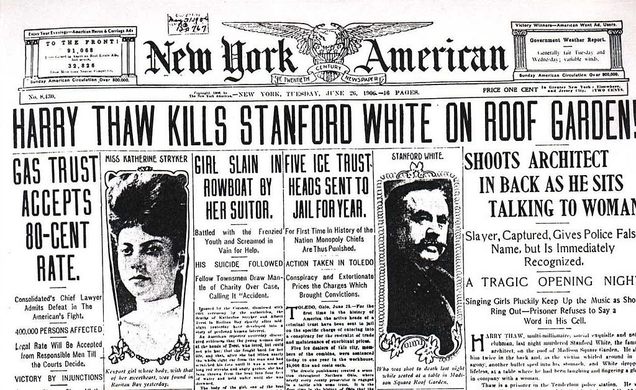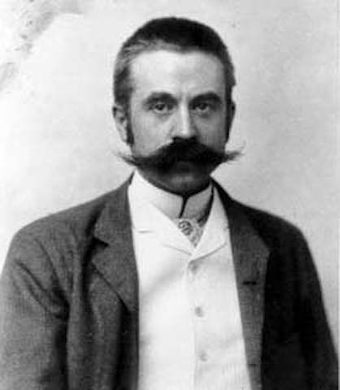The Site of Stanford White's Sex Crimes
Now a mere parking lot, this bygone address was once the setting of a New York sex scandal which led to one of the most sensational murders in the city's history.
Walking westward along 24th Street in Manhattan, halfway down between 5th and 6th Avenues, there is a small gap between the buildings.
Currently a parking lot, the address Number “22” once belonged to a building that no longer exists, collapsed in 2007 after years of neglect. On Number 24 next door, imprints of Number 22 can still be seen etched into the brick walls; marks where a flight of stairs would have been, the remnants of the floors, and the slant of the roof. This ghostly impression is all that remains of New York’s greatest architect and spoiler of women, the seducing chambers of Stanford White.
By the turn of the 20th century, Stanford White was a leading light in New York society. As the pre-eminent member of legendary Manhattan architecture firm McKim, Mead & White, he transformed New York from grimy brownstones and the slums of the Bowery into the glittering Beaux Arts city we know today. His masterpieces include the Washington Memorial Arch in the Village, the original Pennsylvania Station, the Players Club and the 5th Avenue mansions for the Astor and the Vanderbilt families.
Stanford lived principally in the original Madison Square Garden, on what is now Madison Square Park, his home a tower topped with a gold naked statue of Diana—but across the park in the dingy side streets of West 24th St, the Pharaoh of Fifth Avenue kept his concealed love lair.
By the time she was 16, Evelyn Nesbit was the most photographed and famous woman of her era. The original Gibson girl, she was spotted on stage by White, who showered her with lavish gifts until she consented to come to lunch on West 24th St. With nothing much to look at from the outside except for a shop window for the original FAO Schwarz on street level, the inside was a different world.
Regarding her first visit to White’s abode, Evelyn described “the sudden plunge from the dingy street entrance into this room was breathtaking. The predominating color was a wonderful red…heavy red velvet curtains shut out all the daylight.” Decorated in luxurious red Oriental silks and up-lit works of art, this room was where White dined his girls with feasts brought in from Delmonico’s. After lunch, Evelyn was invited to follow White upstairs, walking up a murky staircase to where she was ushered into a room of deep forest green. Hanging from the ceiling was a “gorgeous swing with red velvet ropes around which trailed green similax, set high in the ceiling.”
In his favorite hideaway, White introduced Evelyn to the pleasures of the red velvet swing, eventually taking her to his bedroom covered in mirrors, where he drugged and raped her. But Evelyn was so taken by the dashing and debaucherous White, they continued to rendezvous at the four-story building at 22 West 24th St. consensually for years.
The legendarily dastardly hedonist would pay for his crimes in 1906, when Evelyn’s then husband Harry K. Thaw gunned White down during a performance in the rooftop theatre of the old Madison Square Garden. The case became known as the “crime of the century” and the media was filled with salacious details of the murder, yet the small, innocuous looking building on West 24th Street was forgotten. It became a low rent hotel, and eventually collapsed in 2007. What happened to the red velvet swing no one knows, or at least no one who’s telling.












Follow us on Twitter to get the latest on the world's hidden wonders.
Like us on Facebook to get the latest on the world's hidden wonders.
Follow us on Twitter Like us on Facebook